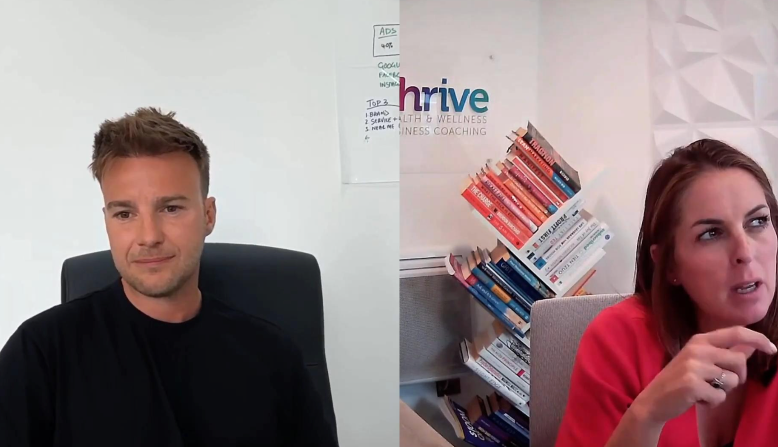How to Recover from Google's Helpful Content Update: A Deep Dive Into A Client's Recovery.
Today, more than ever, business success means navigating the evolving landscape of search engine algorithms, and Google's Helpful Content Update is a testament to this dynamic shift.
Google announced the update in September 2023 and added guidance to their Helpful Content System documentation. The update and its impact have no doubt sent shockwaves through the search industry.
In this blog post, we examine in depth the steps Klatch took to enable a client's impressive recovery after the update. We've split the the expert analysis into three parts to make it easier for you to digest:
Part one: The client's situation
Part two: Inspecting the technical foundations
Part three: Analysing the content for recovery success
We provide you with the actionable insights and strategic approach that led to a 145% increase in visibility in just over 2 months of the project start date.

Semrush - category pages visibility last 30 days
Part one: The Client's Organic Situation
Our client had experienced a 102% decrease YoY to landing pages that drove most of its enquiries. The drastic decline had a detrimental impact on business revenue, which is when they decided to reach out to Klatch.

Google Search Console - August 2023 YoY
In August 2022, organic search contributed 224 conversions over the month, whereas in August 2023, the same channel contributed 102 conversions -- a 54% drop year over year.

GA4 - August 2023
Why had this happened? The client was clear from the start: They had created 100+ location pages with the same templated content five years ago, and this strategy had worked exceptionally well for them -- until it didn't.
To fill the enquiry gap, they decided to increase their spending on paid search, which resulted in an extra £2,300 spent over the same month.
So, the decline in organic traffic had a twofold impact on their bottom line: They had fewer enquiries but had also spent more money on marketing.
Part two: Inspecting technical foundations
Remove redundant pages
We isolated pages showing zero clicks or indexation issues. We removed pages that didn't contribute value to the domain through user interaction data, content analysis, or both. We also prioritised clearing out non-indexed items in GSC.
Check for rendering issues
We checked rendered pages in Screaming Frog to ensure no rendering issues for templated content. Sometimes, rendered content can be impacted by JavaScript or slow loading times. We needed to ensure there were no performance issues before diagnosing content issues.
Analyse page performance
Page speed will impact search engines ability to crawl a website. If pages are slow to respond, they will take a longer time to crawl the entire site. This can also reduce a website's overall 'crawl budget' which Google defines as a set of URLs that Googlebot can and wants to crawl. Put simply, poor performance may result in pages not being crawled and therefore new or existing content not being seen.
Review external and internal links
We reviewed the domain's link acquisition rate and the distribution of links to subpages. A poor internal linking strategy can compound content issues. We analysed the site architecture and utilised the Screaming Frogs Crawl Visualisation Guide, which reveals underlying patterns that are harder to uncover in data and spreadsheets.
Check for potential issues with JavaScript
We ensured there were no JavaScript crawling issues for internal links, especially links within the navigation. The Web Developer extension can be used to disable JavaScript. Screaming Frog can also be used to imitate how search crawls your website.
Part three: Analyse content for recovery success
Conduct a thorough content cleanup
We conducted a content cleanup and eliminated anything that didn't contribute to the website. We checked for pages with duplicate content and ensured every page was unique and had a clear focus. It's important to be cut-throat and ensure no templated generic content features on multiple pages.
Maintain individual page focus
We then realised the client had plagiarised content across multiple pages, decreasing relevance. Maintaining relevance and focusing on the page's target keyword is essential. User behaviour is vital, and providing concise, to-the-point answers can enhance the effectiveness of your content.
Conduct an E-E-A-T review
We conducted an E-E-A-T review on content templates, addressing templated factors (such as authorship) and article-level factors (like bias and unsupported statements).
Analyse content expertise
Working with the in-house content team, we analysed every page to ensure it was well-written, factually correct, and appropriately cited. We followed Google's search quality rater guidelines, focusing on meeting user needs and providing supplementary content.
Find pages that are losing ground
Using compare reports in Google Search Console, we analysed queries for pages that were losing ground. We then conducted a query/page-level click gap analysis to identify losses and assess their relevance to the page content.
Taking the above steps resulted in the pages seeing a 145% increase in visibility 2.5 months after the work started.

Have you been impacted by the September HCU update? Book in a free consultation with one of our team.












